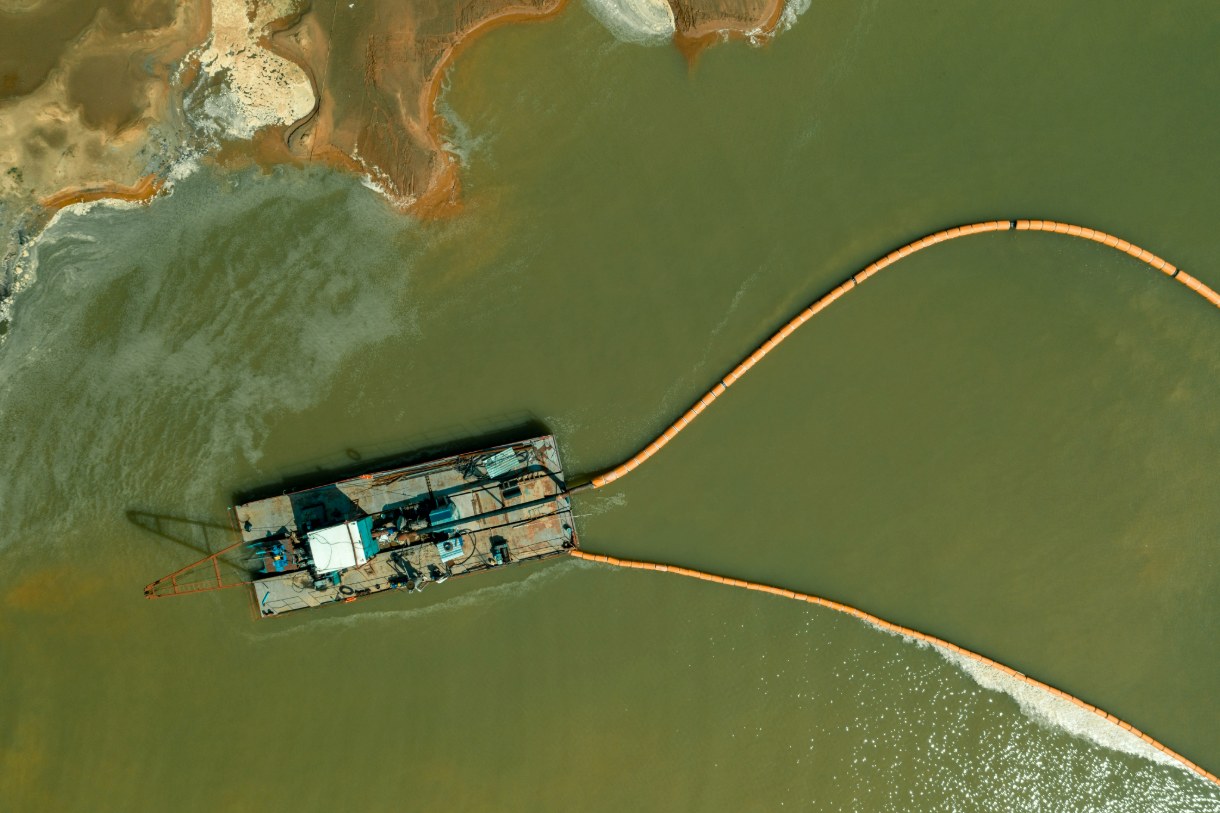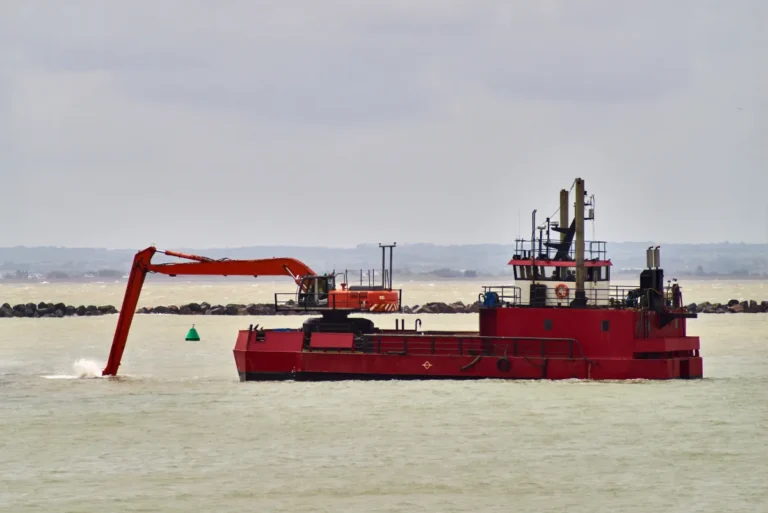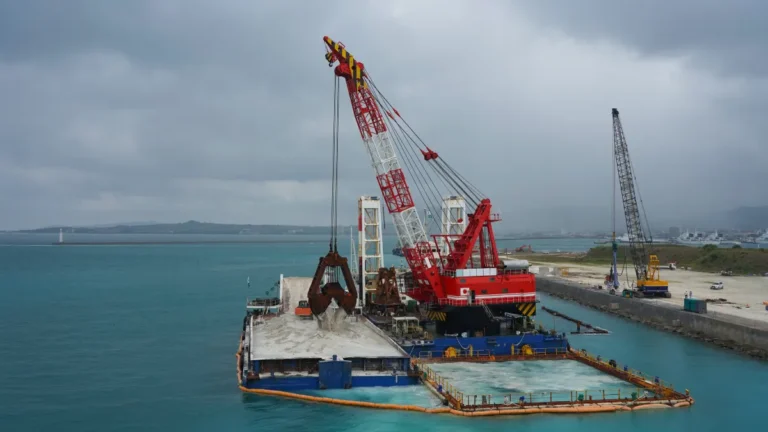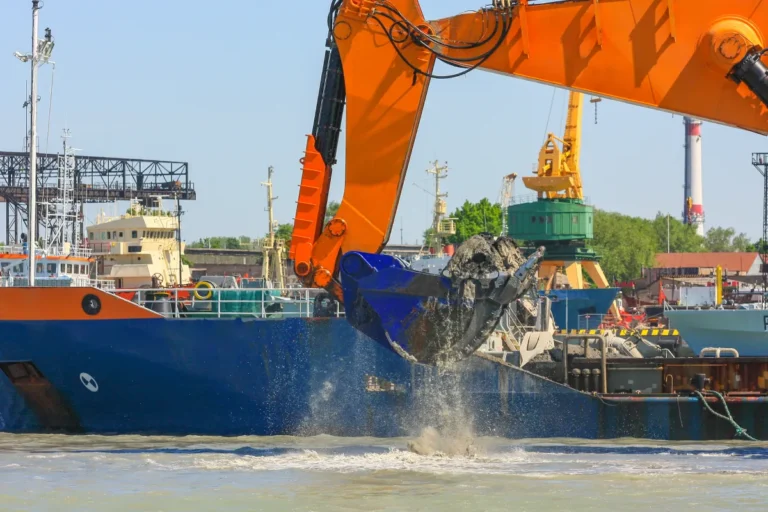A dredging platform relies on the seamless integration of its pump system to achieve maximum operational efficiency. The pump serves as the heart of the dredging process, moving sediment from the excavation site to the discharge point with precision and consistency. Whether installed on a large dredge platform or a versatile dredge barge, the choice of pump type, proper installation, and optimization strategies determines the success of any dredging project. By understanding the key components, integration process, and best practices for maintenance, operators can significantly enhance performance and extend equipment lifespan.
Understanding the Role of Pump Systems in Dredging
Pump systems are a critical component of any dredging platform, as they are responsible for moving sediment, slurry, and debris from the excavation site to the designated discharge location. Whether operating in ports, rivers, or offshore environments, the pump serves as the core engine that determines the efficiency and productivity of the dredging operation. On a dredge platform or dredge barge, the pump’s performance directly impacts material throughput, energy consumption, and overall project timelines.
Primary Function
The primary role of a dredging pump is to transport dredged material through pipelines, often over significant distances and with varying discharge heights. The pump must generate enough flow and pressure to handle high-density mixtures of solids and water, while maintaining consistent performance in challenging marine and industrial conditions.
Pump Types Used in Dredging Platforms
- Hydraulic Dredge Pumps – Powered by hydraulic systems, these pumps are suited for deep-water operations and environments where flexibility and maneuverability are essential. They are commonly used on cutterhead dredgers and remote-operated dredging platforms.
- Cutterhead Pumps – Designed to work in tandem with a rotating cutterhead, these pumps handle dense, compacted materials by breaking them down before pumping. They are ideal for operations involving hard-packed sand, clay, or rock.
- Submersible Slurry Pumps – Installed directly into the water or slurry, these pumps reduce suction lift requirements and improve efficiency in shallow or confined dredging environments. They are often deployed on smaller dredging barges and modular dredge platforms.
Impact on Operational Efficiency
Selecting the right pump for a dredging platform is critical for achieving optimal performance. Pump capacity must match the expected material volume and particle size, while the power system should provide consistent energy without overloading. Wear resistance is another key factor, as pumps in dredging applications are exposed to abrasive materials that can cause significant damage over time. Properly matched and well-maintained pumps not only increase productivity but also reduce operational costs by minimizing downtime and extending equipment lifespan.
Core Components of a Dredging Platform
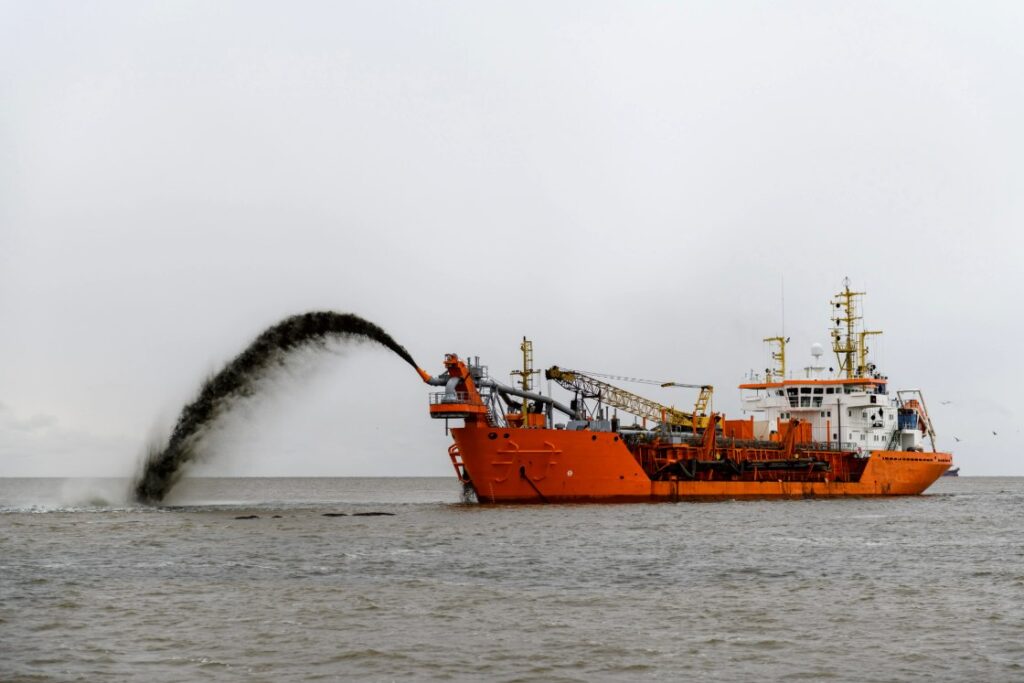
A well-designed dredging platform must combine structural integrity, efficient material extraction systems, reliable power sources, and effective material transport mechanisms. Each component plays a vital role in ensuring that the dredge operates efficiently and can withstand the demanding conditions of marine, river, and industrial dredging projects.
Hull Structure and Stability Considerations for Mounting Pumps
The hull of a dredge platform or dredge barge must provide a stable and durable base to support heavy pumping equipment. Stability is crucial to prevent operational disruptions, especially when working in rough waters or during continuous dredging operations. Hull design should accommodate the weight of the pump system, resist torsional stresses, and maintain balance even when the dredger is handling uneven loads or operating in strong currents.
Cutterhead or Suction Apparatus and Its Connection to the Pump System
The cutterhead or suction apparatus is the primary interface with the dredging site. On cutterhead dredgers, the rotating cutterhead loosens compact material before it enters the suction line. On suction dredgers, the intake directly draws in sediment-laden water. In both cases, the apparatus must be securely connected to the pump system to ensure uninterrupted material flow and prevent cavitation or blockages.
Onboard Power Sources (Diesel/Electric) and Compatibility with Pump Drives
Diesel engines, electric motors, or a hybrid of both can power dredging platforms. Diesel power is common in remote or offshore operations due to its high output and autonomy, while electric power offers reduced emissions and lower operational noise for environmentally sensitive areas. Regardless of the source, the power system must be fully compatible with the pump drive—whether hydraulic, direct drive, or electric motor—to ensure smooth, efficient operation.
Material Handling Systems (Discharge Pipelines, Booster Pumps)
Once sediment is pumped from the dredging site, the material handling system is responsible for transporting it to the final discharge location. This typically includes discharge pipelines, which may extend for kilometers, and booster pumps to maintain adequate pressure and flow over long distances. Properly engineered material handling systems are essential for maximizing dredging output and minimizing downtime caused by blockages or pressure drops.
Factors to Consider Before Integrating a Pump with a Dredge Platform
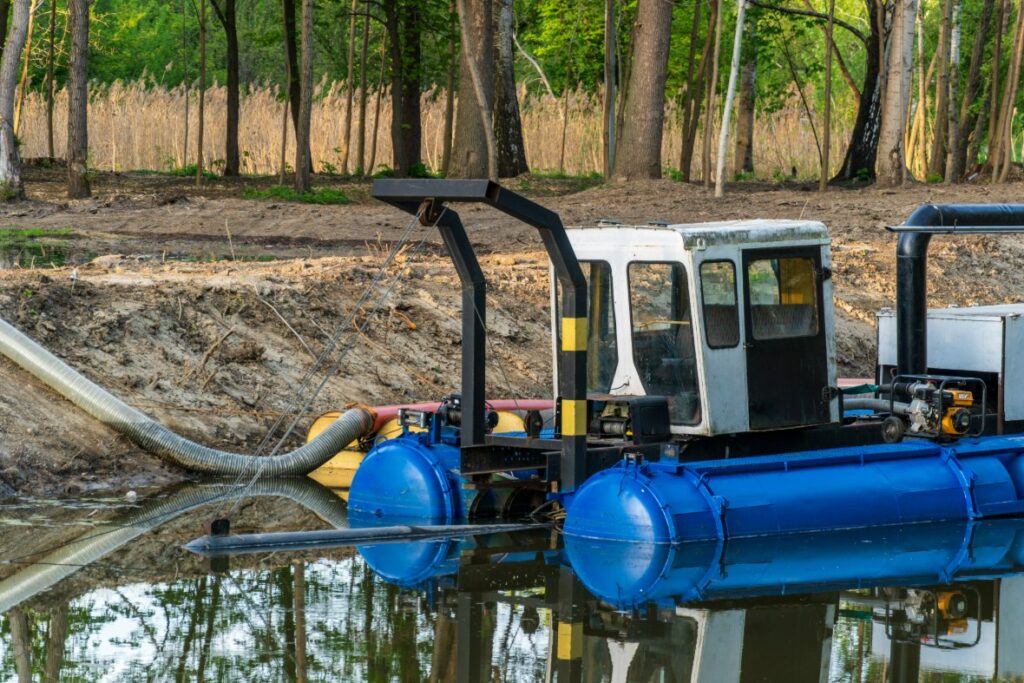
Integrating a pump system into a dredging platform requires careful evaluation of operational, structural, and environmental factors. The correct integration ensures that the pump operates at peak efficiency while maintaining the stability and safety of the dredge platform or dredge barge.
Compatibility: Matching Pump Capacity to Platform Dimensions and Stability
The pump’s capacity must align with the physical dimensions and load-bearing capabilities of the dredging platform. Oversized pumps can compromise the stability of a dredge barge, especially in challenging water conditions. Undersized pumps, on the other hand, may fail to meet production targets, leading to inefficiencies and extended project timelines. Ensuring that the pump size, weight, and mounting method are compatible with the platform’s structure is essential.
Power Requirements: Ensuring Alignment with Platform’s Energy Systems
Pumps can be powered hydraulically, electrically, or via diesel-driven systems. The selected pump’s power demand must match the platform’s available energy supply. For example, electric-powered pumps require sufficient onboard generation or shore power connections, while hydraulic pumps depend on reliable onboard hydraulic systems. Mismatches between pump power requirements and the platform’s energy systems can lead to downtime and reduced productivity.
Material Type: Selecting Pumps Based on Sediment Characteristics
Different dredging environments present varying material challenges, from fine silt to coarse gravel or even rock fragments. Pump selection should be based on the type, density, and abrasiveness of the sediment. A cutterhead pump may be ideal for compacted sand and clay, while a submersible slurry pump may be better for fine sediments in shallow areas. Matching pump design to material characteristics reduces wear, improves efficiency, and prevents blockages.
Flow Rate and Head: Calculating Discharge Distance and Lift Requirements
The pump must be capable of delivering the necessary flow rate to transport dredged material over the required distance and elevation. Head pressure calculations should factor in pipeline length, vertical lift, bends, and booster pump requirements. Accurate flow and head matching ensure that the pump delivers consistent performance without overloading or operating inefficiently.
Environmental and Regulatory Compliance
Integrating a pump into a dredging platform must also account for environmental regulations and operational best practices. This may include using low-emission power sources, minimizing turbidity, and adhering to noise restrictions in sensitive areas. Regulatory compliance ensures that dredging operations proceed without legal or environmental setbacks, particularly in protected waterways or coastal zones.
Integration Process for Pump Systems on Dredging Platforms
A structured integration process ensures that the pump system functions efficiently and reliably on a dredging platform. Each step must be executed with precision to optimize performance, reduce operational risks, and extend equipment lifespan. Whether the installation is on a large dredge platform or a compact dredge barge, following best practices is essential for long-term operational success.
Pre-Integration Assessment: Site Survey, Platform Inspection, and Hydraulic Calculations
Before installation begins, a detailed assessment should be carried out. This includes a site survey to evaluate dredging conditions, such as water depth, sediment type, and environmental restrictions. A platform inspection verifies structural integrity and ensures adequate space and load capacity for the pump. Hydraulic calculations are then performed to determine required flow rates, head pressure, and energy demands based on pipeline length, elevation, and material density.
Mounting & Alignment: Securing the Pump System for Stability
The pump must be mounted securely to the dredging platform to maintain stability and reduce operational vibration. Improper alignment can cause uneven wear, reduced efficiency, and structural strain on the platform. Mounting systems should be designed to absorb vibration, protect critical components, and ensure that the pump remains balanced during varying dredging loads and sea conditions.
Hydraulic & Electrical Connections: Safe and Efficient Installation Practices
Once mounted, the pump requires proper connection to the platform’s hydraulic or electrical systems. For hydraulic drives, this involves leak-free hose routing, pressure testing, and compatibility checks with the onboard power unit. For electric pumps, secure wiring, waterproof connectors, and compliance with marine electrical safety standards are essential. In both cases, connection points must be easily accessible for future maintenance.
Testing & Calibration: Verifying Performance Before Deployment
Before full-scale dredging begins, the pump system should undergo thorough testing. This includes running the pump under simulated operating conditions, verifying flow and head output, and monitoring vibration and temperature levels. Calibration ensures that the pump operates at optimal efficiency and aligns with the dredge platform’s performance targets. Any adjustments, such as impeller clearance or speed settings, should be completed before the dredging project starts.
Optimizing Pump and Dredge Platform Synergy
Maximizing the efficiency of a dredging platform requires more than simply installing a high-performance pump. The pump system and the dredge platform or dredge barge must work in harmony to deliver consistent output, minimize downtime, and extend equipment life. Achieving this synergy involves fine-tuning operational parameters, improving material handling, and adopting performance monitoring practices.
Balancing Pump Speed and Cutterhead Rotation
For cutterhead-equipped dredge platforms, synchronization between the cutterhead rotation speed and pump output is critical. If the cutterhead speed is too high relative to pump capacity, excess material can clog the suction line. Conversely, if the pump is overdriven without sufficient material feed, cavitation may occur. Operators should adjust both speeds in real time based on sediment density and dredging depth to maintain smooth material flow.
Reducing Cavitation Risks Through Proper Pump Positioning
Cavitation can cause severe damage to pump impellers and reduce overall efficiency. Proper pump positioning on the dredging platform helps maintain consistent suction pressure and minimizes the formation of air pockets. This is especially important on dredge barges working in shallow or variable-depth conditions, where changes in water flow can quickly disrupt suction stability.
Using Real-Time Monitoring Systems
Integrating advanced monitoring systems allows operators to track pump performance metrics such as flow rate, pressure, vibration levels, and motor temperature. These systems provide early warnings of potential issues, enabling preventive maintenance before failures occur. On modern dredging platforms, sensor data can be fed into automated control systems that adjust pump speed and cutterhead operation for optimal performance.
Minimizing Wear in Abrasive Environments
When dredging highly abrasive materials such as coarse sand or gravel, selecting wear-resistant pump components—such as hardened impellers, liners, and seal systems—extends operational life. Additionally, adjusting pump speed to maintain optimal slurry velocity reduces sediment settling in pipelines, preventing blockages and excessive wear.
Common Challenges in Pump-Platform Integration (and How to Overcome Them)
Integrating a pump system with a dredging platform can present several technical and operational challenges. If not addressed early, these issues can lead to reduced efficiency, increased maintenance costs, and unplanned downtime. By identifying common problems and applying proven solutions, operators can ensure that a dredge platform or dredge barge performs reliably in demanding environments.
Excessive Vibration Leading to Platform Instability
High vibration levels can damage both the pump system and the structural integrity of the dredging platform. Misalignment, worn bearings, or imbalanced impellers often cause vibration. Using precision alignment tools during installation, installing vibration dampeners, and performing regular balancing checks can significantly reduce the problem.
Pump Overloading Due to Improper Matching with Platform Capabilities
If a pump is too large for the dredge platform’s power and stability limits, overloading can occur, leading to premature wear and frequent shutdowns. The solution is to carefully match pump specifications with the platform’s power system and structural load capacity during the design stage, avoiding unnecessary strain on the equipment.
Frequent Blockages When Handling Coarse or Sticky Material
When working in environments with debris, clay, or large gravel, pumps can experience frequent blockages. Installing a cutterhead for material breakdown, using larger-diameter suction lines, and maintaining the correct slurry velocity in pipelines can help prevent clogs and maintain continuous flow.
Power Mismatches Between Platform and Pump Motor
Incompatibility between the pump motor’s requirements and the platform’s power supply can result in underperformance or electrical faults. This issue can be avoided by conducting a detailed power compatibility assessment before integration and, if needed, installing dedicated power units or converters.
Corrosion and Erosion Damage in Marine Environments
Saltwater, abrasive sediments, and harsh weather can quickly wear down pump components. Selecting corrosion-resistant materials such as stainless steel or coated alloys, combined with regular flushing and cleaning after operations, will extend the pump’s service life on a dredge barge or dredging platform.
Maintenance Practices for Prolonged Efficiency
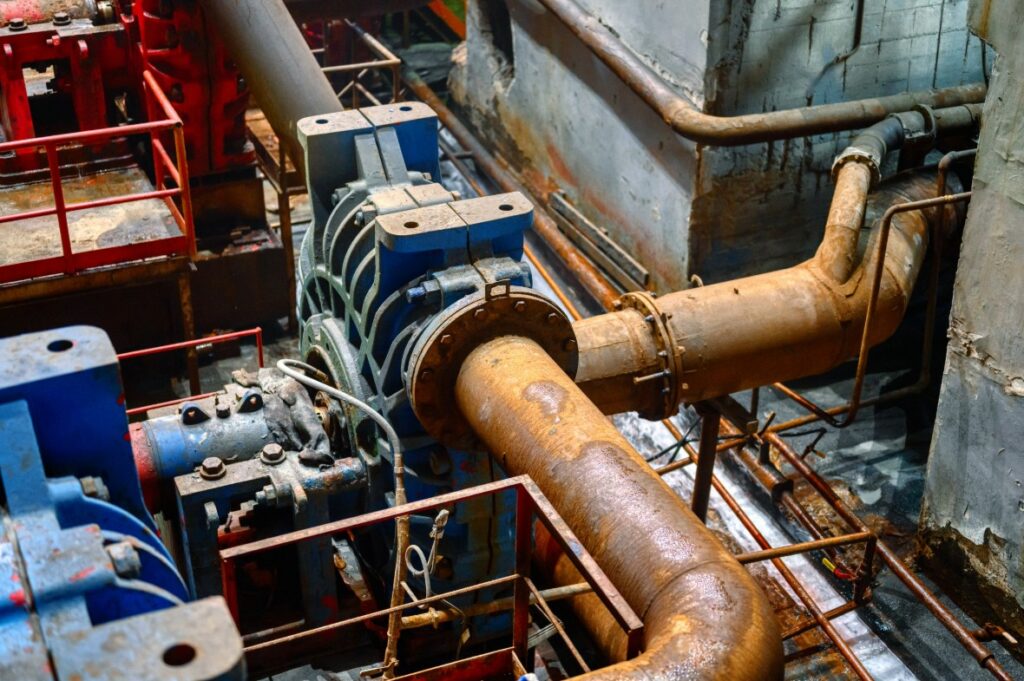
Consistent maintenance is essential for keeping a dredging platform operating at peak efficiency. Pumps on a dredge platform or dredge barge work in demanding conditions, handling abrasive materials and operating for extended periods. A structured maintenance program helps prevent unexpected failures, reduces repair costs, and extends equipment lifespan.
Regular Inspection Schedules for Critical Components
Routine inspections should focus on impellers, wear plates, seals, bearings, and suction lines. Identifying early signs of wear, pitting, or imbalance allows for timely replacements before performance drops or damage worsens.
Lubrication Protocols for Moving Parts
Bearings, seals, and drive components require consistent lubrication to reduce friction and prevent overheating. Using manufacturer-recommended lubricants and adhering to scheduled intervals ensures smooth operation and minimizes component wear.
Cleaning and Flushing Procedures After Operation
After each dredging cycle, the pump and pipeline system should be flushed with clean water to remove residual sediment. This prevents material buildup that can cause corrosion, clogging, or reduced pump efficiency during the next operation.
Monitoring Vibration and Noise Levels for Early Fault Detection
Abnormal vibration or noise often signals issues such as misalignment, worn bearings, or cavitation. Installing monitoring systems on the dredging platform allows operators to detect and address problems before they escalate into costly repairs or downtime.
Stocking Essential Spare Parts Onboard
Keeping critical replacement parts—such as seals, impellers, and bearings—readily available ensures that maintenance can be performed without long delays, even during offshore or remote dredging operations.
Future Trends in Pump and Dredging Platform Integration
Advancements in technology are reshaping how pump systems are integrated with dredging platforms, making operations more efficient, environmentally friendly, and cost-effective. Whether working on a large-scale dredge platform or a mobile dredge barge, these innovations are setting new performance standards in the dredging industry.
AI and IoT-Enabled Monitoring for Predictive Maintenance
Modern dredging platforms are increasingly equipped with AI-driven monitoring systems and IoT sensors that track pump performance in real time. These systems analyze flow rates, vibration levels, and temperature data to predict maintenance needs before failures occur, reducing downtime and extending equipment life.
Modular Pump Systems for Faster Integration
Modular pump designs allow for quick installation and removal, enabling dredging platforms to adapt to different project requirements without lengthy retrofits. This flexibility is particularly beneficial for contractors handling multiple dredging sites with varying sediment types and depths.
Hybrid and Electric-Powered Dredging Barges
With growing environmental regulations, hybrid and fully electric dredge barges are becoming more common. These platforms reduce emissions, lower operational noise, and can operate in eco-sensitive areas where diesel-powered equipment may be restricted.
Advanced Materials for Extended Wear Life
Pumps integrated into dredging platforms are now using high-performance alloys, ceramic coatings, and composite materials to withstand highly abrasive and corrosive conditions. This extends service intervals and reduces the frequency of costly overhauls.
Automation and Remote Operation Capabilities
Remote-controlled and autonomous dredging systems are gaining traction, allowing operators to manage dredge platform operations from onshore control centers. This enhances safety, particularly in hazardous or deepwater environments, and enables continuous, round-the-clock dredging.
Conclusion
Integrating the right pump system with a dredging platform is more than an equipment choice—it’s an investment in productivity, reliability, and long-term cost savings. From initial assessment to optimization and ongoing maintenance, each step ensures that the dredge platform or dredge barge operates at peak efficiency in challenging environments. At CA Dredge Pros, we specialize in delivering the expertise, equipment, and support needed to help you achieve precision, efficiency, and dependable results on every dredging project.


